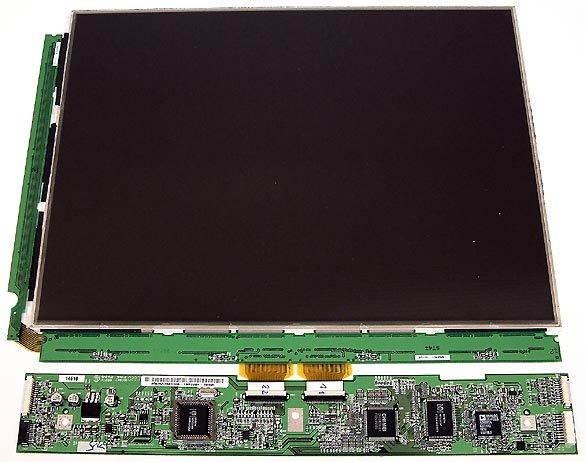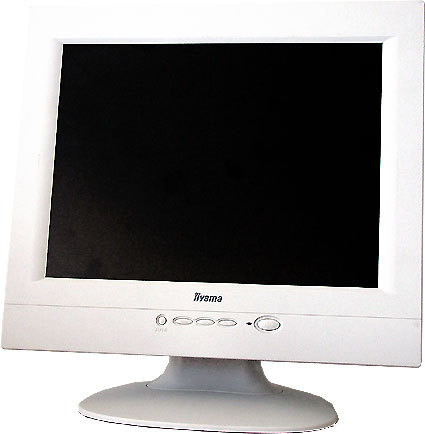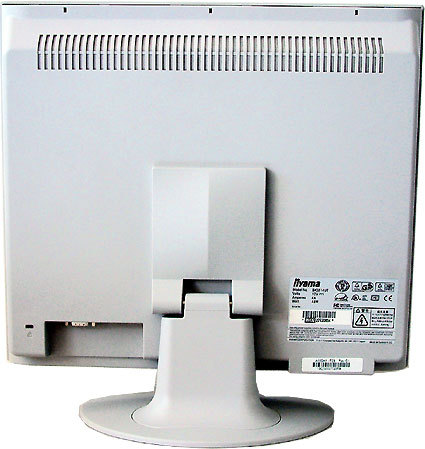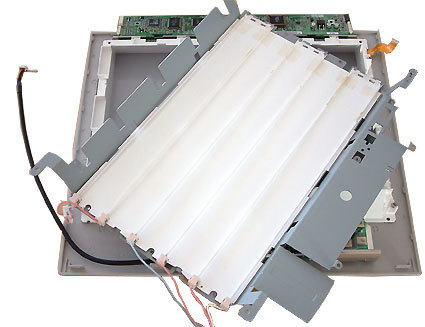Supersize Your TV for $300: Build Your Own XGA Projector!
Step By Step: Removing The TFT Panel
Our aim: to retrieve the LCD panel by carefully dismantling an old TFT monitor - pictured is a 15.1" panel from Iiyama
The difficulty of removing the LCD panel depends on the flatscreen you choose; it may prove easy or, in a few cases, nearly impossible. In our experience, the displays from Iiyama, such as our BX3814UT, make an excellent choice, because the LCD panel is adhered to the frame only lightly, and can be removed with just a little bit of care. Not all manufacturers follow this approach, and this raises the risk of breaking the panel during removal.
We must first take off the stand before disassembling the rest of the unit, ending with the entire casing. Start by removing the metal panels.
This monitor serves as a good basis: 15.1" TFT screen from Iiyama (BX3814UT)
Rear view of the flatscreen. The screws for the stand are removed first, then those for the casing.
After the inverter board and control electronics have been removed. The backlighting is at the front.
Before the next step, we advise you to pull all the cables, so the inverter board and its panel can be removed. You might want to label all the connectors to make reconnecting easier later on. Removing the panel from the frame is a little trickier, as a hairline crack can quickly appear and destroy the conductor paths. LCD panels are glass with fine conductor paths vapor-deposited onto them, and the connections to the controller are made on the margins. All paths are very thin and extremely sensitive to tensile stress. A broken conductor path can lead to missing screen lines or to total destruction of the unit. Be extremely careful: these miniature connections cannot be repaired!
Get Tom's Hardware's best news and in-depth reviews, straight to your inbox.
Current page: Step By Step: Removing The TFT Panel
Prev Page TFT Display: Resolution, Color Intensity, Response Time Next Page Step By Step: Removing The TFT Panel, Continued-
Hi,Reply
I'm a 12 year old and I just got this projector working. If you live in the bay area then I recommend you go to Weirdstuff that is where I got all my parts for all under $46 -
just looking into this idea and was just wondering what the implications would be to have the lcd screen supported away from the glass of the projector thus aiding the cooling of the screen ?? Say a 2 to 3cm gap? would this affect the picture quality or would the screen still need the same amount of cooling as it does on the screen. As you can tell by the questions i havn't made one but seriously thinking about it. also ... !! woulld there be an option of other video inputs to the screen ie .. Phono jack rather than laptop / pc?Reply
Cheers for the info if you respond. -
chinmayj007 hiiiiiiii im CJ can you tell me please which in this projector plz.......................Reply



